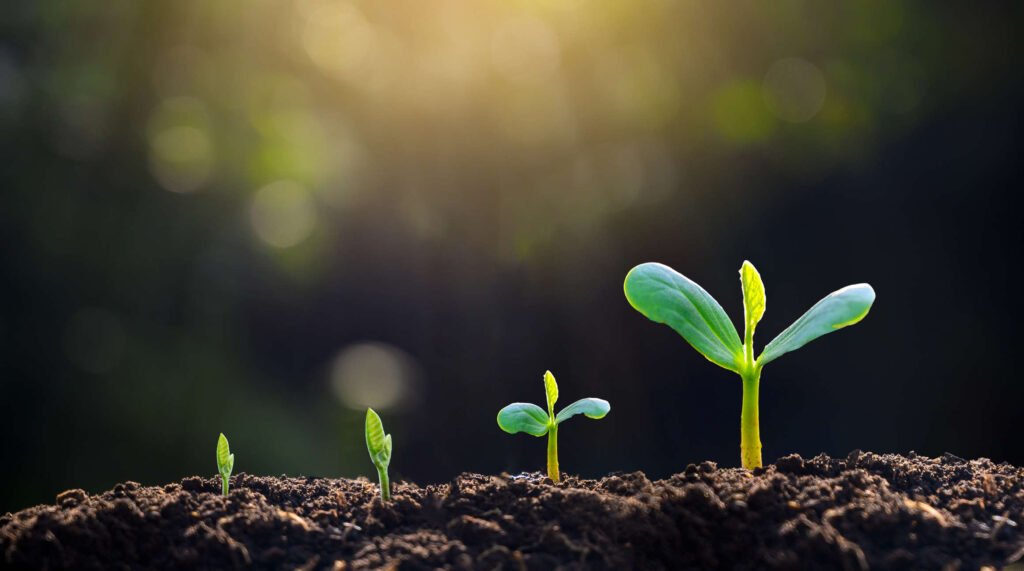Biotechnology and research for soil improvement

Este conteúdo foi publicado originalmente aqui by Solena Ag Inc.
At-a-glance:
- Implementing innovative technological solutions is essential to guarantee soil productivity and environmental well-being
- Soil science research along with biotechnology provide tools that help identify the microorganisms responsible for soil quality
- Being aware of soil status means treating it properly and addressing its possible problems effectively
Countless problems related to soil degradation and pollution caused by its misuse and bad management would be avoided if we all knew the soils in which we grow our food.1
Modern agriculture faces several issues, such as agrochemicals inefficiency, low soil productivity, infertility, etc. In view of this situation, the best approach to find a sound solution is to use soil science research to get to know how these issues originate. Knowing the status and possible changes in soil conditions must be a priority in order to manage it effectively and sustainably.2
Technology and research: a key factor to soil’s health
In relation to these issues, the Food and Agriculture Organizations of the United Nations (FAO), insist that solutions that can be used in a simple, economical, and sustainable way must be developed.3 Furthermore, Inga Rhonda King, President of the Economic and Social Council of the United Nations, states that “[the application of] technology can expand the alternatives and facilitate the implementation of effective solutions”.4
In Mexico, however, soil research is rarely applied. That is why, in Solena, we decided to link scientific research and practical agricultural development in a way that producers can benefit from their biological capital. Our job is to introduce soil science research to agriculture in order to provide the solutions that are key to guarantee soil’s health and agricultural productivity.
How can we heal the soil?
Achieving the efficient treatment of soils and responsibly planning their sustainability requires having data related to 5
- the role played by the different nutrients in plants
- the soil’s fertility
- the weather conditions
- the quantity and quality of organic matter on the topsoil
Broadly speaking, the key to know a soil status is to observe the presence of living organisms in it, so we can learn what the soil can be used for and which problems it might trigger.6 Since microorganisms directly affect soil quality, it is paramount to analyze their behavior to spot which of them are more beneficial.
Each soil contains different microorganisms, in fact, in one crop field various types of bacteria, fungi, or nematode can be found every certain number of steps. Therefore, soil science research is vital to provide solutions responding to every field’s necessities. In Solena we only need soil samples and our methodology to initiate the soil’s health restoration.
A personalized solution
In order to perform a microbiological analysis of soil, it is necessary to determine two elements that indicate its biological quality: diversity and abundance. Although we may think that more is better, sometimes the abundance of microorganisms can bring certain complications, because it means the soils are affected or there is an imbalance among microorganisms.7
We probably know by now that matter cannot be created nor destroyed; it can only be transformed. The main function of soil’s living organisms is to supply nutrients to it through organic matter transformation.8 Soil science allows us to find the exact strain that can return balance to soil and transform it into a product capable of making biological capital profitable.
Finding that strain is just 50% of our job, the other half is in developing formulations that support the soil’s necessities, as well as the living organisms’ shelf life. The type of field is also taken into account, whether it is in the open air or in a greenhouse, as well as the crops irrigation habits, weather, etc. As a result, we get a totally personalized and unique ferment.
Finally, to ensure the continued improvement of soil conditions, monitoring its status is of great importance, and so is promoting the development of efficient solutions. Thus, by restoring your soil’s health you will be able to make a profit off your biological capital so that you benefit from your field at any time of the year while still taking care of it.
The benefits of soils science research
If a sick person is given any medication without knowing their medical condition or the cause of their disease, they may not heal or even worsen. The same is true of damaged soils: if there is no awareness of the soil conditions nor the origin of its damage, applying any agricultural input will not represent a complete solution, and in the long term it can cause more problems.
It is possible to know the soil state and the microorganisms that inhabit it by applying a biotechnology-based methodology. This makes it easier to treat the damage, as it works exactly on what impacts the soil. This greatly benefits soil and crop nutrition, because they get to receive what they really need to produce cleaner, healthier, more nutritious food.
Enjoy the benefits that soils science research brings to us by integrating innovation and technology into your production method. Reduce soil problems originated by chemicals while consciously taking care of your soil and protecting nature.
References:
1, 5, 6, 7, 8 https://www.uaeh.edu.mx/investigacion/productos/4776/edafologia.pdf
2 http://www.fao.org/news/story/es/item/357165/icode/
3, 4 http://www.fao.org/news/story/es/item/1171338/icode
Additional references:

